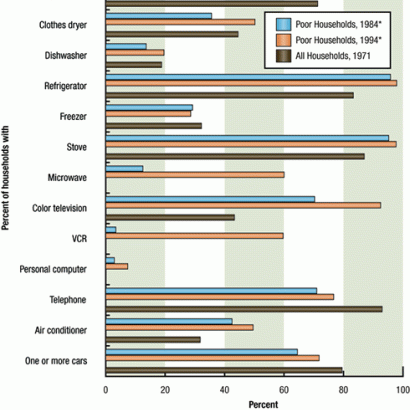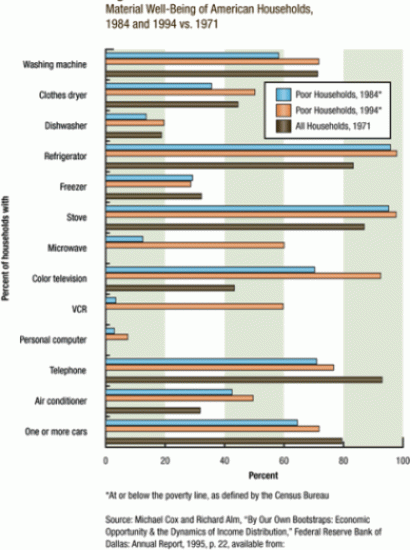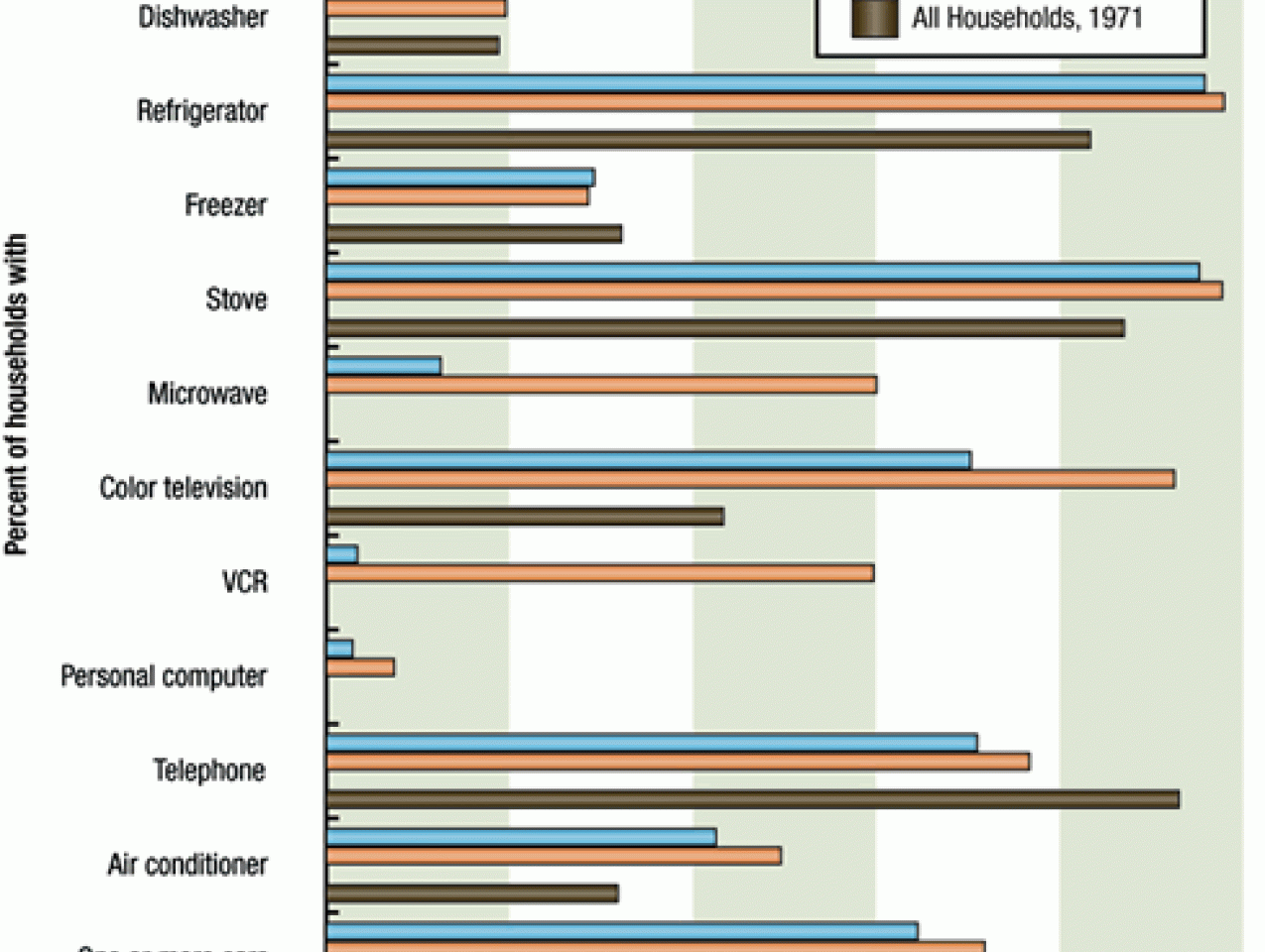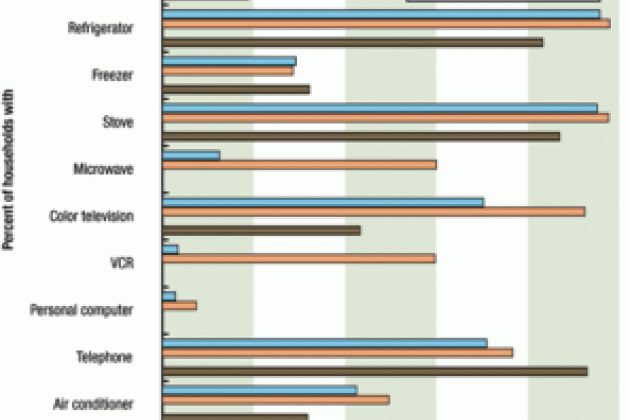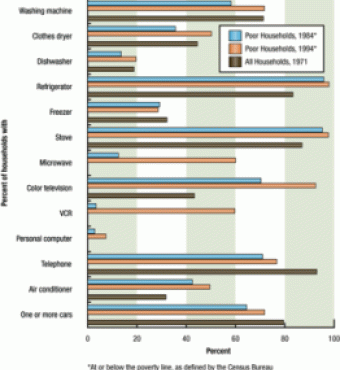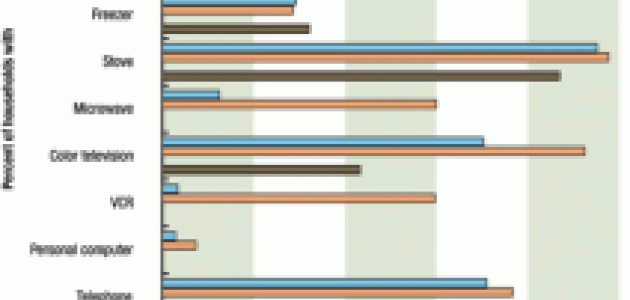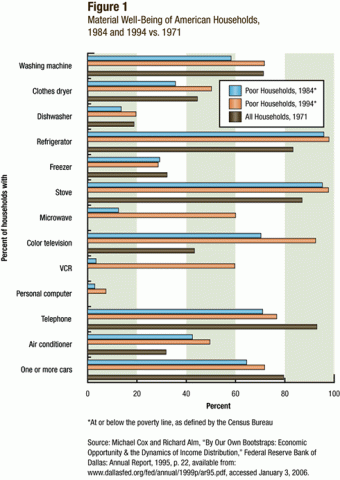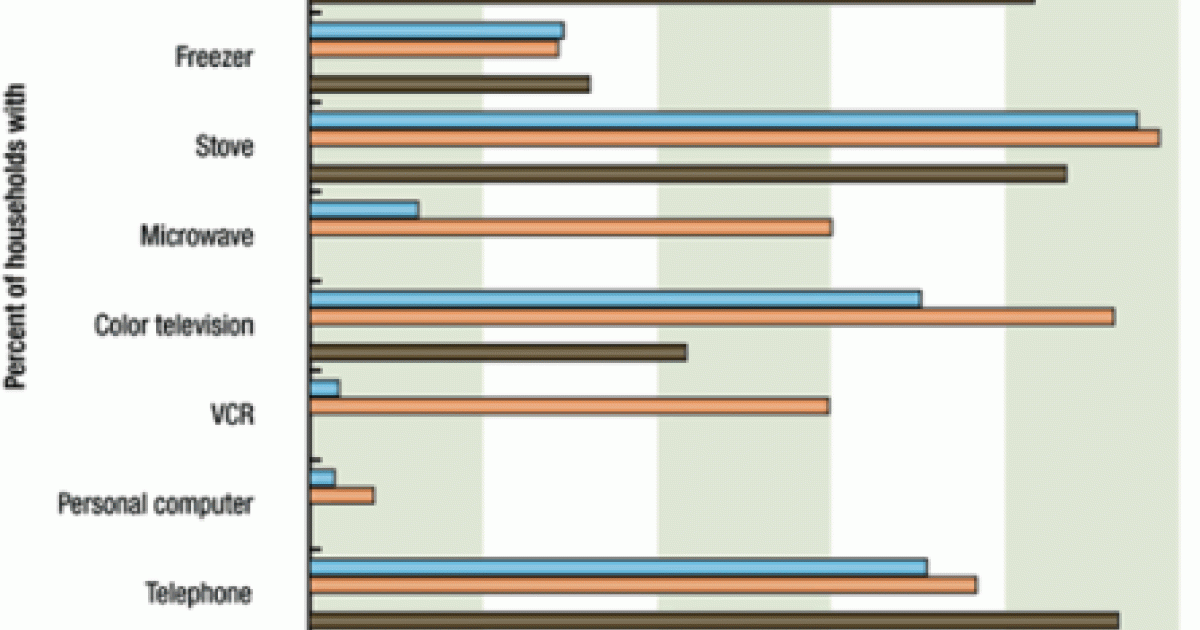- Budget & Spending
- Economics
The movie Cinderella Man, released last year to critical acclaim, recounts the true story of Depression-era boxer James J. Braddock’s inspirational rise from impoverished journeyman to heavyweight champion of the world. One striking aspect of the movie is its portrayal of desperation, hardship, and hunger during the Great Depression. Forced to choose between sending his children to distant relatives and filing for government relief, Braddock accepts the aid. His pain and embarrassment at being unable to provide for his family make for some of the most heart-rending moments of the film. As his boxing success improves his fortunes, Braddock finds himself back in the relief line—only this time he’s paying the government back.
The searing images of the Great Depression, and the movie’s themes of pride, humility, hard work, and family, present an interesting contrast to the plight of the poor today. Although there are no doubt many individuals and families in need, the picture of poverty in America today can best be described as muddled.
The U.S. Conference of Mayors reminds us every year around Christmas that hunger and homelessness have increased during the previous 12 months, as has been the case, apparently, every year for the past 20 years. Yet the unemployment rate for 2005 (estimated at 5.2 percent) will likely be two full percentage points lower than it was in 1985, and this 20-year period saw one of the most robust economies in American history—including five straight years of less than 5 percent unemployment. Something doesn’t compute. There’s no such confusion when it comes to the Great Depression. At its height, one in every four Americans could not find work.
The General Social Survey (a far-ranging personal interview survey of U.S. households conducted nearly every year) reveals that, between 1972 and 1994, 76 percent of Americans tended to feel that “the rich get richer and the poor get poorer.” Yet, as shown in figure 1 (page 95), a household in poverty in 1994 had the same modern conveniences and material well-being as the general population did in 1971. In addition, as noted in the 1995 Annual Report of the Federal Reserve Bank of Dallas, “the evidence suggests that low income is largely a transitory experience for those willing to work, a place where people may visit but rarely choose to live.” When we hold a perception of income inequality that runs counter to historical facts, is it possible for “poverty” and “want” to have any coherent meaning?
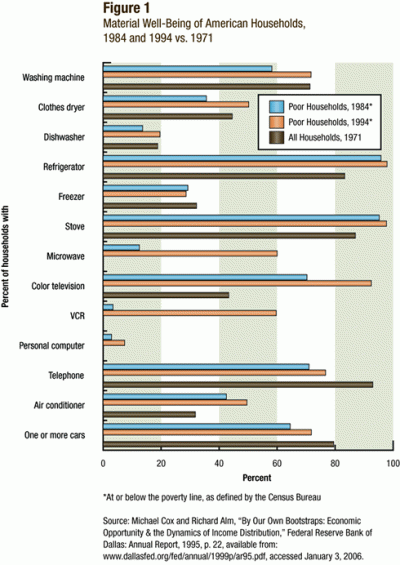
The poverty of the Great Depression was plain for all to see. A large fraction of the nation’s banks, businesses, and farms failed. As a result, millions of Americans not only lost their jobs but lost their life savings and their homes. So it’s reasonable to assume that a large federal intervention was warranted. The contradictory claims of abundance and impoverishment today, however, make justifying the massive social programs begun in the 1930s and expanded in the 1960s a harder task. One program in particular is at a crossroads of sorts, facing questions about its size, effectiveness, and even its purpose.
A Program at the Crossroads
The original Food Stamp Program (FSP) began toward the end of the Great Depression, in May 1939. While in operation, it provided vouchers to needy people that could be redeemed for food items. During its four years of operation, the program reached 20 million people, at a total cost of $262 million. Two aspects of the original program set it apart from today’s version and reflect a mentality regarding government assistance befitting Jim Braddock’s. First, food stamps were not distributed freely. People on relief purchased orange stamps equal to their normal food expenditure; for every $1 in orange stamps purchased, they would receive 50 cents worth of blue stamps. Orange stamps could be used to purchase any food item, but blue stamps were restricted to buying food deemed surplus by the Agriculture Department. The program supplemented family diets; it was not a handout. Second, the program ended in 1943, when “the conditions that brought the program into being—unmarketable food surpluses and widespread unemployment—no longer existed.” The idea that a government welfare program should end when the social/economic crisis has passed is lost on most of today’s lawmakers.
The program was revived in May 1961 by President Kennedy and then made permanent by President Johnson in 1964 as part of his Great Society initiative. Enacted not in response to any economic crisis but during a time of unprecedented prosperity, the programs of the Great Society sought an end to poverty itself. Backed by this utopian vision, the FSP rapidly expanded across the country, from half a million participants in 1964 to 15 million by 1974. The next major milestone came in 1977, with the elimination of the purchase requirement, long considered a nuisance and barrier to participation. The law that effected this change also introduced myriad regulations (eligibility and income guidelines, resource limits, store requirements, etc.) that have been further complicated over the years.
The program was scaled back in the early 1980s and then expanded later in that decade and on into the early 1990s. Participation dropped off as a result of the 1996 welfare reforms but has picked up again since 2000, rising from 17.2 million participants to 25.7 million in 2005. Current program data show an average monthly benefit of $93 per person and $213 per household, costing the federal government $28.6 billion. Add $2.4 billion in administrative and other costs, and total spending on the FSP in fiscal year 2005 reached nearly $31 billion.
The first crossroads facing the FSP involves its size or, more accurately, its growth. The FSP shares with other entitlement programs the propensity to grow at rates much faster than inflation, GDP, or tax revenues. Indeed, between 2000 and 2005, food stamp spending increased 82 percent, outpacing the 49 percent growth in new participants. The growth in entitlement spending—generally seen as unsustainable—is a major contributor to the persistent federal deficit, which is why Congress passed the 2005 Deficit Reduction Act. That act provides nearly $40 billion in mandatory savings over the next five years, including $700 million from the FSP.
Advocates are worried that some 255,000 people could be removed from the program through eligibility restrictions as a result of the Deficit Reduction Act. But the savings, which represent only a fraction of overall program spending, run directly counter to efforts by state agencies to boost their food stamp participation rates. Across the nation, only 56 percent of those eligible for food stamps participated in the program in 2003. As an entitlement program, any portion of the remaining 44 percent of eligible persons can apply for and receive benefits, thus increasing spending once more. The drive to reduce entitlement spending while simultaneously expanding participation is tantamount to having two trains racing toward each other on the same track—catastrophic.
The only surefire way to reduce entitlement program spending is to eliminate the entitlement. The FSP—the next logical program to follow in the footsteps of welfare reform—should be block-granted to the states with a cap on federal spending. States would then be free to pursue a variety of implementation efforts to maximize their federal allotment. Innovation, collaboration, cost-sharing, and the identification of the most needy would lead to more-flexible and cost-efficient programs to supplement the diets of low-income families. The die was cast against entitlements such as food stamps the moment they were signed into law; serious reform is simply a matter of time.
A second crossroads concerns the effectiveness of food stamps in meeting the nutritional needs of the poor. The dilemma is that advocates of federal food programs do not want to see food stamps reduced in any way; they are thus forced into the ridiculous position of insisting that hunger is on the rise, when, according to former Agriculture Secretary Dan Glickman, “The simple fact is that more people die in the United States from too much food than of too little.” Upward of 70 percent of low-income adults are overweight (many are in fact obese), and adolescents from low-income families are twice as likely to be overweight as other adolescents. Additionally, some Agriculture Department studies have shown that food stamps may actually contribute to overeating, although the evidence is mixed.
The health problems associated with being overweight or obese are well documented. Thus, every effort should be made to support nutrition education and determine the most effective ways to positively influence the diets of program participants. The FSP has stepped up nutrition education efforts since the early 1990s. More than $192 million was spent on such programs in 2003, but their effectiveness is unclear. One idea under consideration is “green stamps”—a proposal that would set aside a portion of each individual’s benefit to be used only for purchasing fruits and vegetables. Other researchers are studying the link between food insecurity (where not all members of a household have access at all times to enough food for an active, healthy lifestyle) and obesity among low-income persons. In the end, the prevalence of being overweight and on food stamps should bring greater scrutiny to the efficacy of federal food relief.
The final crossroads facing the FSP centers on continuing efforts to alter the very meaning or purpose of the program in the public’s eye. The current message was summed up nicely in a recent Wall Street Journal article quoting USDA spokeswoman Jean Daniel, “This is really a nutrition—not a welfare—program.” The subtle semantics in calling food stamps a nutrition program are aimed at removing the stigma historically associated with welfare. Although reducing individual humiliation is certainly a well-meaning endeavor, stigma is a powerful and necessary tool for a civil society. How else can we influence behavior without monetary costs or legal appeals?
Perception Is Everything
And here we return to the story of Jim Braddock. At the lowest economic point in our nation’s history, welfare was a painful last resort for this broken man. He accepted relief only out of sheer desperation, and he paid every penny back when he had the chance. Seventy years later, during a prolonged season of national wealth, we are asked to believe that “the food stamp program serves as the first line of defense against hunger.” What was once government relief is now termed a “benefit”—and you couldn’t return the money today if you tried. Let’s not kid ourselves. The FSP is a means-tested income transfer program that exists, in principle, to improve the welfare of impoverished Americans. Character can be undermined by condescension just as easily as it can be nourished by compassion.
Is it too late to return to the mentality prevalent at the beginning of the food stamp program? Serious economic crises today still affect particular individuals and families. We can identify those people who are truly needy and partner with them to meet a temporary nutrition shortage. Of course, exceptions would be made for the indigent and elderly, but most recipients would know that it is their ultimate responsibility to put bread on the table. Only then can the government’s function justly be described as providing a hand up, not a handout.
Give me your tired, your poor,
Your huddled masses yearning to breathe free,
The wretched refuse of your teeming shore.
Send these, the homeless, tempest-tossed, to me:
I lift my lamp beside the golden door.
— Emma Lazarus
That vision of America, etched on a plaque at the base of the Statue of Liberty, is one of transformation, not stagnation. The golden door symbolizes not a golden trough but a land of opportunity for all who enter. Although it may be difficult to see this vision through the fog of entitlement, it still remains the last best hope for all Americans, rich and poor.








